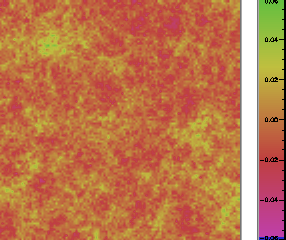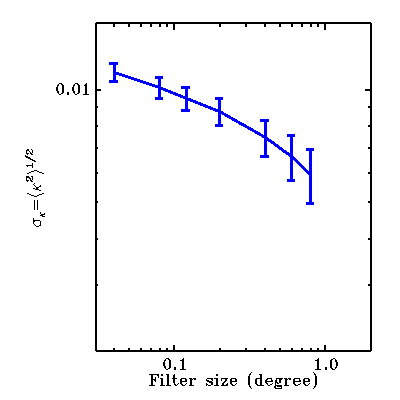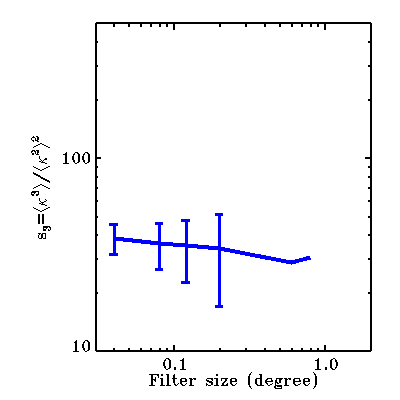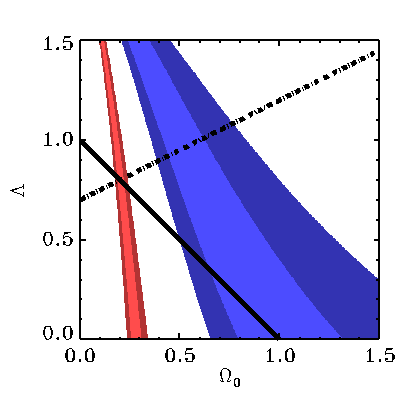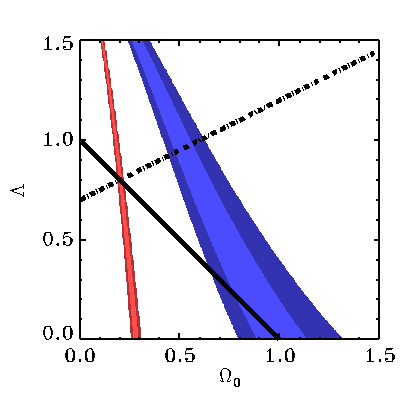
 in a given direction to
the overdensity. This relation makes intervene the integral along the radial
distance
in a given direction to
the overdensity. This relation makes intervene the integral along the radial
distance  and depends on the
cosmological parameters through the angular distances and mainly through
the overall factor
and depends on the
cosmological parameters through the angular distances and mainly through
the overall factor  .
This factor betrays the fact that fundamentally the local
convergence is a measure of the total density and not of the
overdensity. The above relationship is dimensionless
when the angular distances
are expressed in units of
.
This factor betrays the fact that fundamentally the local
convergence is a measure of the total density and not of the
overdensity. The above relationship is dimensionless
when the angular distances
are expressed in units of  .
The elaboration of a distortion map would permit the determination
of statistical quantities related to the cosmic density field.
The easiest quantity to get is the rms convergence. It is
directly proportional to the spectrum normalisation,
.
The elaboration of a distortion map would permit the determination
of statistical quantities related to the cosmic density field.
The easiest quantity to get is the rms convergence. It is
directly proportional to the spectrum normalisation,
 ,
and, at the degree scale, it reaches values of the order 1%,
,
and, at the degree scale, it reaches values of the order 1%,
 .
.
 (however the result is not
directly proportional to
(however the result is not
directly proportional to  because
of the growing rate of the fluctuations).
These maps would allow also to estimate the degree of non-linearities
that have been reached by the dynamics. This is a means to separate
the determinations of
because
of the growing rate of the fluctuations).
These maps would allow also to estimate the degree of non-linearities
that have been reached by the dynamics. This is a means to separate
the determinations of  and of
and of
 . Indeed for a given amplitude
of the convergence fluctuations, the smaller
. Indeed for a given amplitude
of the convergence fluctuations, the smaller  is, the larger
is, the larger  should be.
As a result, the convergence field is expected to exhibit
non-Gaussian features (assuming that the initial conditions were Gaussian)
that are all the more important that
should be.
As a result, the convergence field is expected to exhibit
non-Gaussian features (assuming that the initial conditions were Gaussian)
that are all the more important that  is small. A classic way of quantifying those effects is to consider
the skewness, third moment of the probability distribution function of the
local convergence expressed in units of the square of the second moment.
One expects this quantity to be finite. The perturbation theory
applied to the growth of structures predicts
is small. A classic way of quantifying those effects is to consider
the skewness, third moment of the probability distribution function of the
local convergence expressed in units of the square of the second moment.
One expects this quantity to be finite. The perturbation theory
applied to the growth of structures predicts
![]()


 independently of the amplitude of the fluctuations.
independently of the amplitude of the fluctuations.
